(PCC) Program on Chinese Cities – Thoughts on Overseas Travels Series
Authors: Xu Jing, PhD,
Associate Professor at the School of Economics, Zhongnan University of Economics and Law, specializing in regional economics. Email: xujing301@sina.com
Historical cultural landscapes serve as the best carriers for recording culture, reflecting history, and inheriting ideas. In an era where globalization swallows national characteristics and blurs cultural edges, historical relics and buildings are essential for people to understand history and acquire cultural identity. The maintenance and construction of historical cultural landscapes have long-term significance. “The first duty in the restoration of ancient buildings, no matter how simple, is not to renew but to protect the ruins,” a principle set by the Indian Department of Antiquities in 1932, has seen considerable success in the preservation and repair of monuments and historical sites in India, one of the four ancient civilizations. Countries like France and Italy also adhere to this philosophy, providing comprehensive and meticulous protection to historical architectural heritage, ranging from palaces and churches to century-old factories, mines, and even fragments of walls and broken bricks on the streets. Despite its relatively short history of a few hundred years, the United States places great importance on the protection of historical cultural landscapes, similar to India and European nations. Protecting ruins and maintaining their original appearance is a fundamental principle of historical cultural landscape preservation in the U.S. This principle is best exemplified by the preservation of Middleton Place in Charleston, South Carolina. Having endured the Revolutionary War and the Civil War, Middleton Place has not undergone excessive commercial development or scenic construction projects like “three steps, one scenery; five steps, one painting.” Except for necessary repairs, its overall layout and architectural style have been preserved as much as possible to its original state three hundred years ago, narrating the decline of the Southern plantation economy and the life changes in the plantation before and after the Civil War, amidst the passing of time.
Charleston is one of the oldest cities in the U.S., serving as the capital of South Carolina until 1790 and being the wealthiest small town in the Southern U.S. at that time. Middleton Place, located in Dorchester County, north of Charleston and built along the Ashley River, about 24km from the old town of Charleston, is one of the oldest surviving plantations in the U.S., designated as a “National Historic Landmark District.”
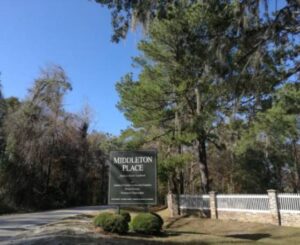
Construction of Middleton Place began in the late 1730s, and through the efforts of nearly five generations of the Middleton family, it became one of Charleston’s largest rice plantations. The Civil War and subsequent earthquakes destroyed all buildings in the North Flanker and the Main House, prompting a reconstruction that began in 1916. Over several decades, the family refurbished the plantation’s gardens, hiring New York architect Bancel LaFarge for the design and using bricks from the destroyed Main House to build a complex including a barn, stables, workshops, and residences. The plantation covers an area of 2832 hectares, with the South Flanker, gardens, and several outbuildings rebuilt in the 1970s.
Entering the tranquil plantation, one is immediately greeted by sprawling greenery and a serene, mirror-like pond, with a breeze carrying the scent of flowers, pausing time itself. The main road of the plantation runs east-west, ending in a circular path that divides the plantation into northern and southern sections. The surviving South Flanker, located on the east side of the circular road, is two stories high, with each floor covering approximately 100 square meters; a two-story annex was added to its south side in the 1930s, each floor covering about 47 square meters. The first floor houses the parlor, living room, and dining room, while the second floor contains three bedrooms, furnished as they were, with portraits of the Middleton family as if silently guarding their former home. Positioned on a hill, the South Flanker offers a panoramic view of the surrounding landscape within a one to two-kilometer radius.
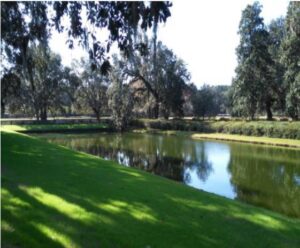
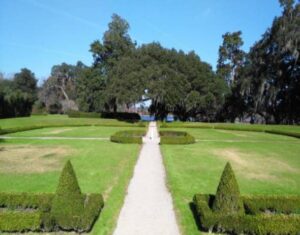
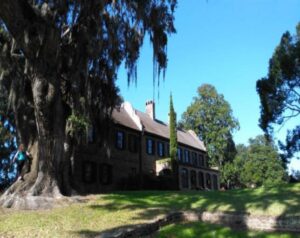
Adjacent to the South Flanker is a scattered garden area, with the northern garden section arranged in a grid, separated by hedges and paths. During the winter months, the plantation’s century-old camellias bloom vibrantly, alongside azaleas on the hillsides. In summer, roses, magnolias, sweet olives, and gardenias come together to form a magnificent landscape. Beyond the flowering plants that bloom in all seasons, the plantation is filled with lush greenery and towering ancient trees, presenting everything in its most natural and primitive form.

To the east, the garden area radiates outwards in a spoke pattern, with a diameter of about 30 meters, densely filled with the famous Middleton Oak trees. These oaks, centuries old, have trunk diameters of more than 3 meters, requiring five or six adults to encircle them. Their fuzzy branches hang down, shading the quiet paths and easily evoking a sense of temporal dislocation, as if one has stepped into the plantation described in “Gone with the Wind,” encountering Scarlett O’Hara with her sachet and dancing shoes. The eastern garden extends in a terraced fashion for about 60 meters down to the Ashley River beach, flanked by two identically shaped pools, resembling the wings of a butterfly. This is the renowned Butterfly Lakes. Standing on the grassy hilltop in front of the South Flanker, the view of the Butterfly Lakes below is like a butterfly dancing and fluttering freely in the verdant, flower-filled plantation.
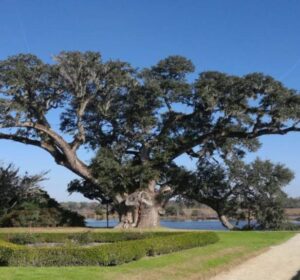

On the southern side of the circular road along the Ashley River is the main exhibition area, featuring small cabins where African American slaves lived and a small church for religious activities. The simple tools and pictures on the walls tell stories of past hardships, suffering, and endurance. The exhibition area also includes livestock sheds and pastures for cows, horses, sheep, and workshops for rice pounding, pottery making, and flour milling. The once bustling and lively scenes no longer exist, leaving only cattle and horses leisurely grazing on the grass, indifferent to the changes of history and the passage of time.
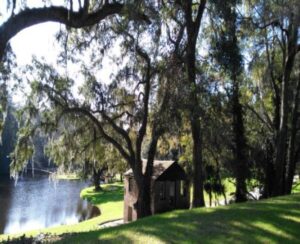

Margaret Mitchell wrote in “Gone with the Wind,” “All gone with the wind belong to yesterday, all hardships of all previous classics leaving is oriented toward the future.” After weathering storms, Middleton Place quietly stands by the Ashley River, offering a tranquil space for the bustling, bustling world, allowing people to slow down and cleanse their spirits.
Note: All uncredited photos were taken by the author.
